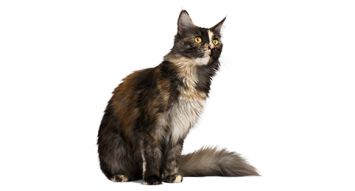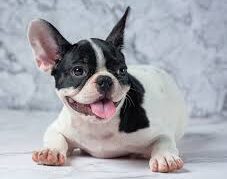Tortoiseshell
The tortoiseshell cat gets its name from its complex colorations. Found in mosaic or chimera, regular or dilute combinations, this cat is so named due to the similarity in color to a once-popular manufacturing material called tortoiseshell. Because the term tortoiseshell, or tortie as their fans affectionately dubbed them, refers to the coat, the tortoiseshell cat is not actually a breed.
Tortoiseshells come in a fascinating mix of black hues with browns, oranges and reds sprinkled throughout. But its not just their coats that are complex. The tortie has been rumored to be the keeper of feisty tortitudebut is it true? Well let you be the judge.
This supposed tortitude is only one of many legends surrounding these beautiful felines. From the Celts to the Japanese, the tortoiseshell cat has a history as intricate as their coats! One rumor is untrue, however some torties are in fact male.
Personality
Calico and tortoiseshell cats are rumored to be a bit feistier than cats of other fur colors, and some research seem to confirm this. But just like the tortis coat, the feline disposition is far more complex.
Physical Attributes
Body
A tortie cat has a 1/3000th chance of being male. That means over 99.9% of all tortoiseshell cats are female. The X chromosome of the cat creates the orange and black coat coloring that is the base of a torties coat. Because females have the XX chromosome patterns, their two Xs can become co-dominant and produce a tortie kitty. Since males have the XY chromosomes, they cant be tortie UNLESS they somehow end up with a genetic mutation and snag another X to then have an XXY pattern. So, torties are mostly, but not entirely, all gals.
Fur length and paw shape can vary greatly as these cats come in all sorts of breeds. The Maine Coon, Cornish Rex, Persian and Ragamuffin breeds have all sported the striking tortoiseshell fur. But even mixed-breed cats wear this fancy coat, including domestic short, medium and long hairs as well as tabbyswhich are often referred to as torbies when their stripes or swirls are mixed with the tortoiseshell color.
Torties whose colors are displayed in larger sections are called patched while those whose colors interweave are brindled. The colors can also be integrated throughout the body (mosaic), or they can be splitone side of the cats body is one color and the other is another color. The split could also be between face and body.
The tortie also varies greatly in weight and lifespan., Tiffany Two, a California tortoiseshell cat, was named the currently-oldest living cat in 2015 by the Guinness World Records, at the very respectable age of 26.






